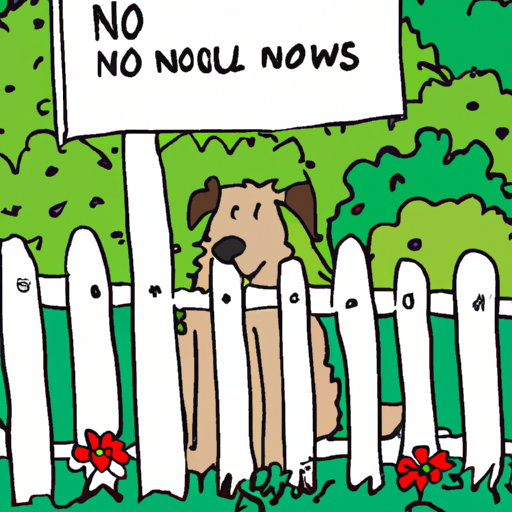Introduction
As a caregiver, you understand the importance of giving love and care to both your pets and your plants. But sometimes, your canine friends just can’t resist the temptation to dig through your beautifully manicured garden. This guide is designed to help you deter your dogs from your plants effectively, with empathy and understanding for your furry friend.
1. Understanding Your Dog’s Behavior
Firstly, it’s crucial to understand why your dog may be drawn to your plants. Dogs are naturally curious and may be attracted to the smell, texture, or even the taste of your plants. Digging can also be a sign of boredom or a way to burn off energy.
- Boredom: Dogs who are left alone for long periods, or are not getting enough physical or mental stimulation, may turn to digging as a way to entertain themselves.
- Excess Energy: Especially in younger or more active breeds, dogs may dig as a way to burn off excess energy.
- Hunting: Some dogs may be digging in an attempt to hunt for insects, worms, or other critters.
Understanding the root cause of the behavior can help you address it more effectively.
2. Training Your Dog
Training is an essential part of any behavior modification plan. Here are some steps:
- Establish Boundaries: Use a physical barrier, like a fence or a garden bed border, to clearly delineate where your dog can and cannot go.
- Redirect Behavior: If you catch your dog in the act, redirect them to an appropriate activity like playing with a toy or chewing on a dog-safe bone.
- Reward Good Behavior: When your dog chooses to leave the plants alone, reward them with praise, treats, or a favorite toy.
Remember, consistency is key in training. Make sure all family members are on board and using the same commands and rewards.
3. Creating Dog-Friendly Spaces
Just as you enjoy your garden, your dog should have a space in your yard that they can enjoy. This could be a patch of lawn for them to roll in, a sandbox for them to dig in, or a shaded spot where they can lie down.
| Zone | Features | Benefits |
|---|---|---|
| Lawn | Soft grass, open space | For rolling and running |
| Sandbox | Deep sand, hidden toys | For satisfying digging urges |
| Shaded Spot | Cool ground, water bowl | For relaxation and hydration |
By providing an appealing alternative, you can help divert your dog’s attention away from your plants.
4. Using Dog-Safe Deterrents
There are many dog-safe deterrents on the market that can help keep dogs away from plants. These include:
- Scents: Dogs have a much stronger sense of smell than humans, and some smells that we find pleasant can be off-putting to them. Citrus fruits, coffee grounds, and vinegar are all commonly used as natural dog deterrents.
- Textures: Dogs don’t like walking on certain surfaces. Placing chicken wire, gravel, or pine cones around your plants can deter your dog from getting too close.
Remember, the goal is not to harm or frighten your dog, but to make the plants less appealing compared to the dog-friendly spaces you have created.
Frequently Asked Questions
Q: My dog is still digging up my plants, even after training. What can I do?
It may take some time for your dog to learn new behaviors. Stay patient and consistent with your training. If the behavior persists, it may be worth consulting with a professional dog trainer or a veterinary behaviorist.
Q: Are there any plants that are particularly good or bad for dogs?
Yes, some plants can be toxic to dogs. Always research the plants in your garden to ensure they are safe. As for ‘good’ plants, dogs don’t necessarily need plants for their health, but they might enjoy having grass to roll in or a shady tree to lie under.
Q: Can I use chili powder or other spices as a deterrent?
While some people recommend using chili powder or other strong-smelling spices as a deterrent, these can irritate a dog’s sensitive nose and eyes. It’s best to stick with dog-safe deterrents.
Remember, every dog is unique, and what works for one may not work for another. It may take some trial and error to find the best solution for you and your canine friend. But with patience, consistency, and understanding, you can maintain both a happy dog and a beautiful garden.



